Ginataang Hipon Sitaw at Kalabasa
What is the perfect meal? Typically, it’s one that manages to satisfy all three tiers of the food pyramid. First, you have your carbs — pasta, bread, or, in most Filipino cases, rice will do the trick for that. Then, you have your proteins. This can come in an array of ingredients, whether it’s meat,…
This post may contain affiliate links. Please read our disclosure policy.
What is the perfect meal? Typically, it’s one that manages to satisfy all three tiers of the food pyramid. First, you have your carbs — pasta, bread, or, in most Filipino cases, rice will do the trick for that. Then, you have your proteins. This can come in an array of ingredients, whether it’s meat, seafood, or even tofu. And of course, your hearty meal wouldn’t be complete without some greens and veggies to keep your body chock full of nutrients. Altogether, you have a meal that is satisfying from beginning to end. And that is exactly what this ginataang hipon, sitaw, at kalabasa is!
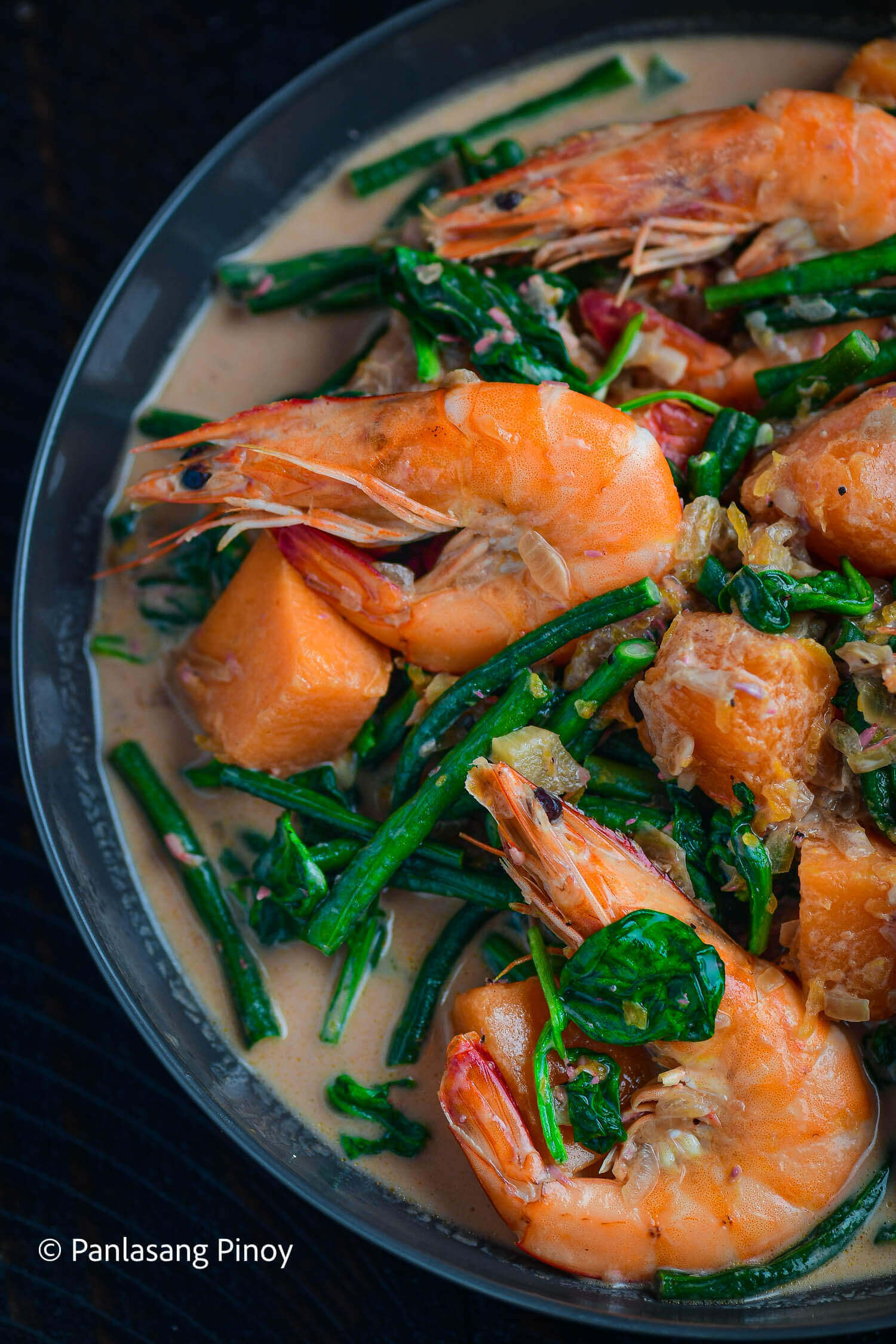
A warm, homemade meal can rarely get any better than this ginataang hipon, sitaw, at kalabasa. On their own, each component is a star of its own, and can make any eating experience much brighter. But put them together and you have a powerhouse of a meal that your whole family will surely scarf down. Brimming with excellent flavors and an aroma to die for, this ginataang hipon dish is beloved across the country. Why wouldn’t it be, when it’s just so delicious?
Ginataang hipon, sitaw, at kalabasa is only one of many Filipino dishes we refer to as ginataan.
From fish, to jackfruit, to even pork, a lot of dishes have been made even better by the presence of coconut milk, or gata. This warm, rich liquid has become a go to for people looking to spice things up in the kitchen. Coconut milk works great not only in desserts, but in savory dishes too. In fact, in regions like Bicol, you’ve gata try all their gata dishes (pun intended!).
Coconut milk is nutty, sweet, but not overpowering in its flavor. This makes it perfect for dishes like ginataang hipon, where all the other ingredients have a good flavor of their own. Here are some other ingredients where gata truly shines, and highlights all other flavors of the dishes they’re in!
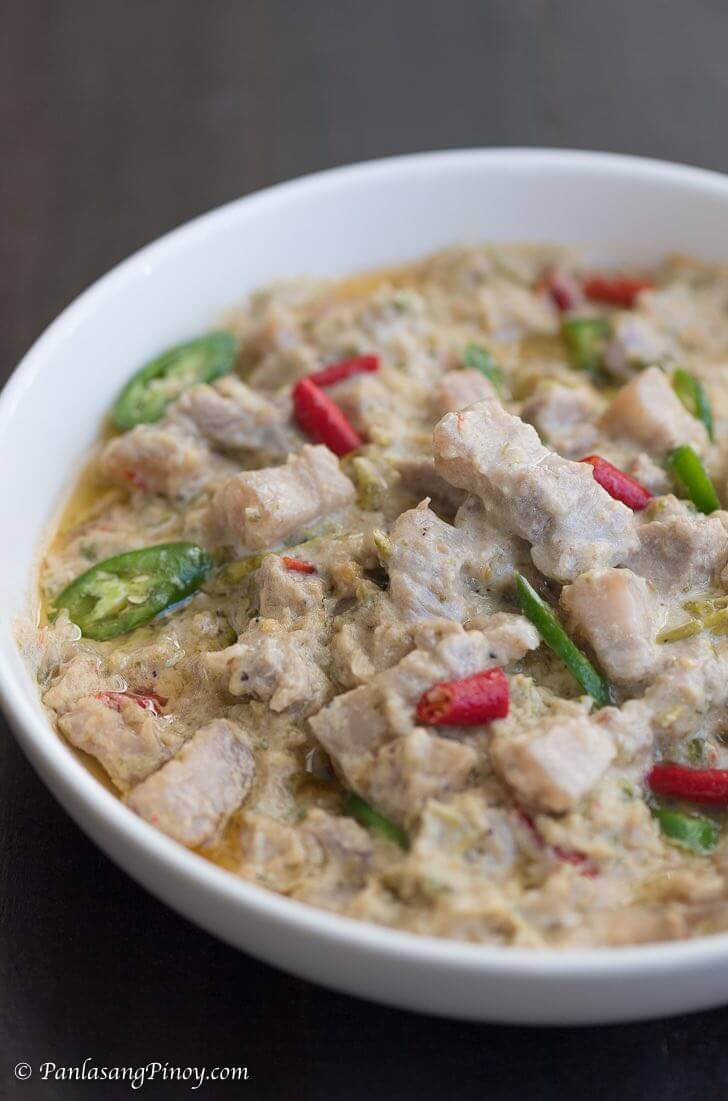
The Bicolano term for delicious or masarap is masiram — something you definitely won’t be able to stop saying once you get a load of this yummy meal! Ginataang hipon aside, I’d say Bicol Express is another quintessential example of the perfect dish. Here, coconut milk truly shines when you pair it with thick and juicy pork belly. Add some shrimp paste and chili peppers, and you have for yourself one spellbinding dish. The sweetness of gata works perfectly well with the spicy chili peppers, and bagoong adds even more umami. Don’t believe us? Try it for yourself, and you’ll be on the Bicol Express train in no time!
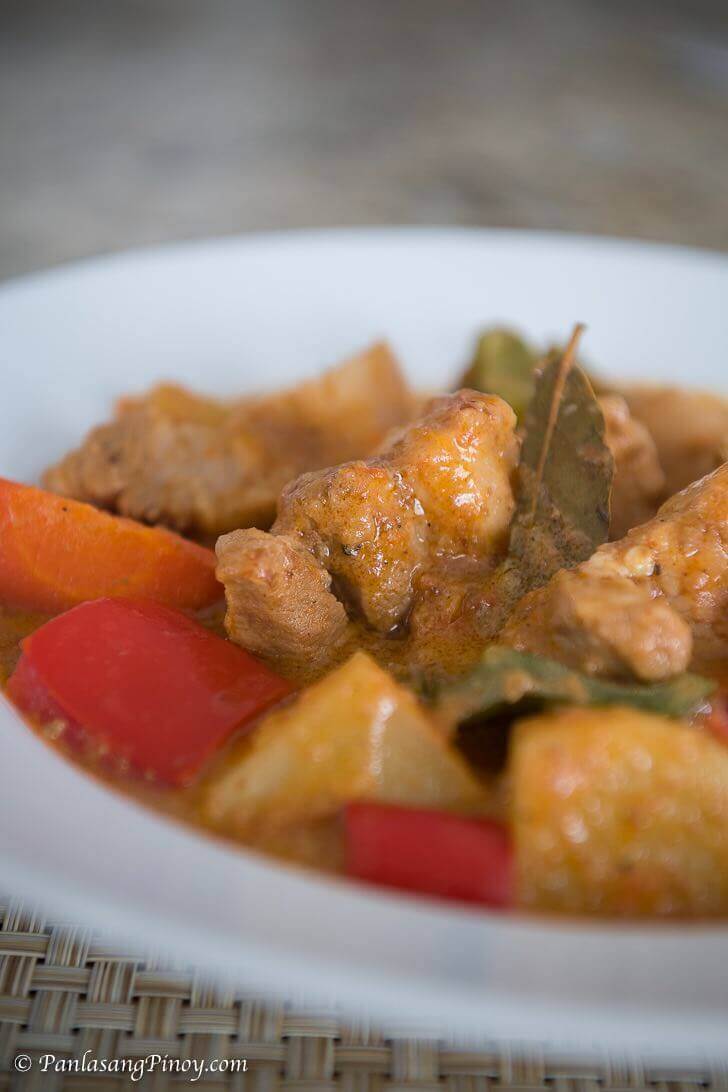
Move over, Avengers; we have a new crossover event of the century! Don’t you just love when two of your dishes fuse together to create something nothing short of otherworldly? That’s what you get in this delicious, mouthwatering Pork Kaldereta sa Gata! What this dish is able to do is combine what you love most about both dishes and put them all in one stellar and delightful meal. Pork kaldereta sa Gata has a saucier, more prominent tomato base than dishes like ginataang hipon. But the coconut milk that flavors it is truly an ingredient impossible to miss.
Ginataang Bilo-bilo with Langka
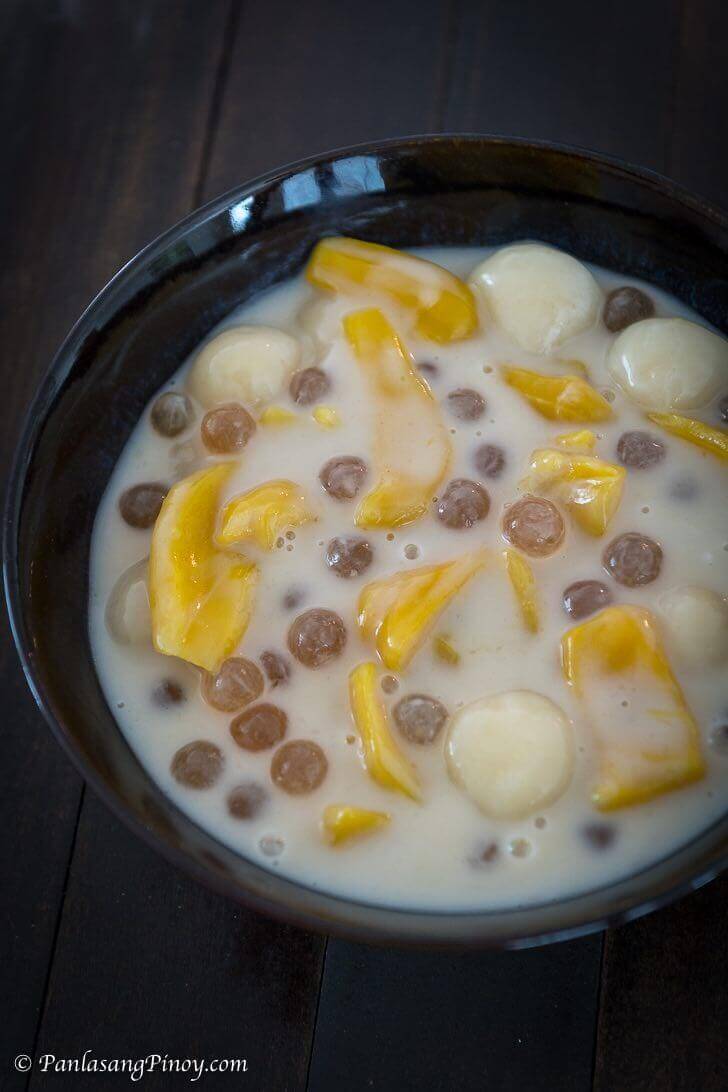
We know we’ve spoken a lot about filling meals like ginataang hipon and Bicol Express. But who said all ginataan dishes have to be savory? This Ginataang Bilo-bilo with Langka begs to differ! Filipino cuisine is as innovative as they come, and we see ingredients like coconut milk in all sorts of dishes, regardless of their taste palate. From appetizers straight on down to dessert, there’s a gata dish for everyone!
Think of this rich and creamy dessert as a simple Ginataang Halo-halo — another Filipino classic. Ginataang bilo-bilo is a dessert soup; I bet you don’t have plenty of those, do you? Much like other savory stews, a wide assortment of ingredients comprises this sweet dessert. Tapioca balls, glutinous rice balls or bilu-bilo, and of course, the hearty jackfruit, comprise this sweet treat. The best part about this dish is that you can have it any time of day you like! If you’re enjoying it as a snack, best to serve it warm. But it’s also equally delicious as a cold breakfast with loved ones.
And coconut milk is healthy, too!
A tasty alternative to cow’s milk, coconut milk is also chock full of nutrients. A good source of calories and saturated fat, studies have proven that gata can also aid in weight loss. Further, you might find that enough coconut milk can help in maintaining healthy cholesterol and heart levels. No wonder people adore it so much!
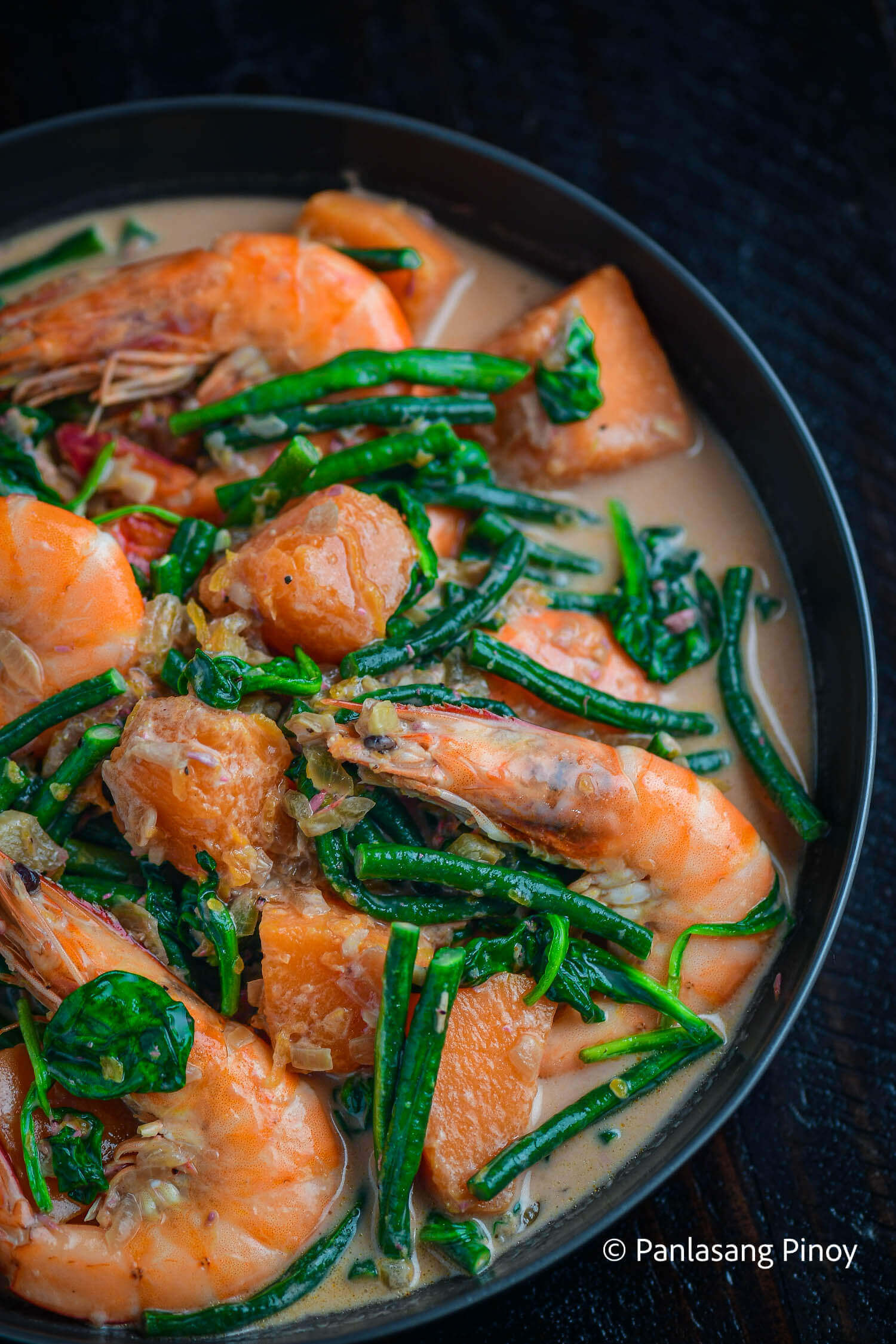
What is your favorite dish to use gata in? Let us know in the comments below!
Ginataang Hipon, Sitaw, at Kalabasa Ingredients
This dish is a combination of two popular ginataan dishes, namely Ginataang Hipon and Ginataang Sitaw at Kalabasa. The former, as you’ll notice, doesn’t make use of vegetables often; only chili peppers and ginger add extra layers of taste to this hearty meal. This isn’t necessarily a bad thing; many people have enjoyed the sumptuous shrimp in ginataang hipon, time and time again. Serving this tasty dish with portions of rice will have you full in no time! It’s no surprise that people love this ginataang hipon rendition, as it’s easy to make as well and doesn’t require that many additional ingredients.
But for those who enjoy healthier alternatives but long for that creamy taste of gata, ginataang sitaw at kalabasa is more often than not a go to. Squash is quite the ingredient; this bright yellow ingredient has a mild but sweet taste you can use in a repertoire of dishes. And sitaw is equally as versatile and dynamic! Not only that, but both of these ingredients have their fair share of nutrients important in any balanced diet.
This dish makes use of almost the same ingredients as ginataang hipon, with common spices like ginger, garlic, and onion. The only difference thus lies in the meat that you use. In ginataang sitaw at kalabasa, pork makes an appearance, adding protein to this hearty dish. While this addition may be seen as optional, pork gives this ginataang delight an extra layer of texture and flavor. Juicy, tender, and delicious, your pork can easily soak up the rich flavors of your coconut milk and other spices.
In this Ginataang Hipon, Sitaw, at Kalabasa, the ingredients are essentially the same. Here is a list of what this dish requires, as well as possible substitutes as you see fit:
- Shrimp. For this dish, you’ll need to clean about one pound of this sumptuous seafood. Depending on your preference, you can peel the shrimp in order to make it easier once eating. But I prefer keeping them intact, in order to preserve as much flavor as possible. The heads of shrimps, particularly, are insanely flavorful!
- Sitaw (String beans). An ever popular green in any Filipino dish, sitaw is one of the easiest vegetables to access at your local supermarket. If you’re looking to try something new, though, slim asparagus or even yard long beans may do the trick! Long green beans (locally known as bitsuelas or Baguio beans) are also good alternatives.
- Kalabasa (Squash). The squash and its many relatives are often familiar in taste and even appearance; you can interchange them easily! Try eggplants or even pumpkins, if they’re available, to get that mild flavor and soft texture you love. Butternut squash is also nice to use. It has a mild sweet taste that makes the dish more enjoyable to eat.
- Coconut milk is a major ingredient. Fresh is best, but canned and the ones in powder form also works for this dish.
- Yellow onion or any color of onion should be ok.
- Bagoong alamang (Shrimp paste) is recommended. However, fish sauce (patis) works well too.
- Malunggay leaves. The popular powerhouse vegetable is one you see in dishes like tinola and sinigang. Malunggay leaves have a number of nutrients and vitamins that will keep your body healthier than ever! Having trouble finding these at your grocery? Don’t worry; spinach is healthy, too, and just as delicious!

Some people opt to add ginger to ginataang hipon as well. Ginger masks the fishy smell that so often follows seafood around, but it also adds a distinct flavor of its own. The smell and taste of ginger is unmistakable, and any dish you add it to becomes infinitely better. And don’t forget its large array of health benefits, too!
Now that you know what ingredients you need, it’s time to get cooking! Let’s make this ginataang hipon, sitaw, at kalabasa together!
How to cook ginataang hipon, sitaw, at kalabasa
The first step in this dish, as is common in most dishes, is to heat oil in a cooking pot. Three tablespoons of cooking oil are enough, before adding in your garlic and onion pieces. Sauté these two in your pot, softening your onions. Then, add in your shrimp, and cook for 1 to 2 minutes. Remove from the pot and set them aside, as we don’t want the shrimp of your ginataang hipon to overcook.
Next, toss in your 2 tablespoons of bagoong alamang, and pour in 2 cups of coconut milk or gata. Bring this fragrant mixture to a boil while stirring, then add your kalabasa cubes. Your squash should cook for 8 to 12 minutes, or simply wait until they’re tender to your liking. Once they’re tender enough for you, put the shrimp you cooked back in the pot, and stir once again. Incorporate all your ingredients well, cooking for about a minute. The rest of your ginataang hipon’s veggies go in now, too; add in your sitaw and malunggay leaves! For 2 to 3 minutes, let your ginataang hipon, sitaw, at kalabasa cook. Add salt and pepper to taste, then turn your heat off the stove.
Transfer your ginataang hipon, sitaw, at kalabasa to a serving plate. This dish is best served piping hot — so don’t be afraid to dig in right away! With how amazing it smells, I doubt you and your family would be able to wait a little longer.
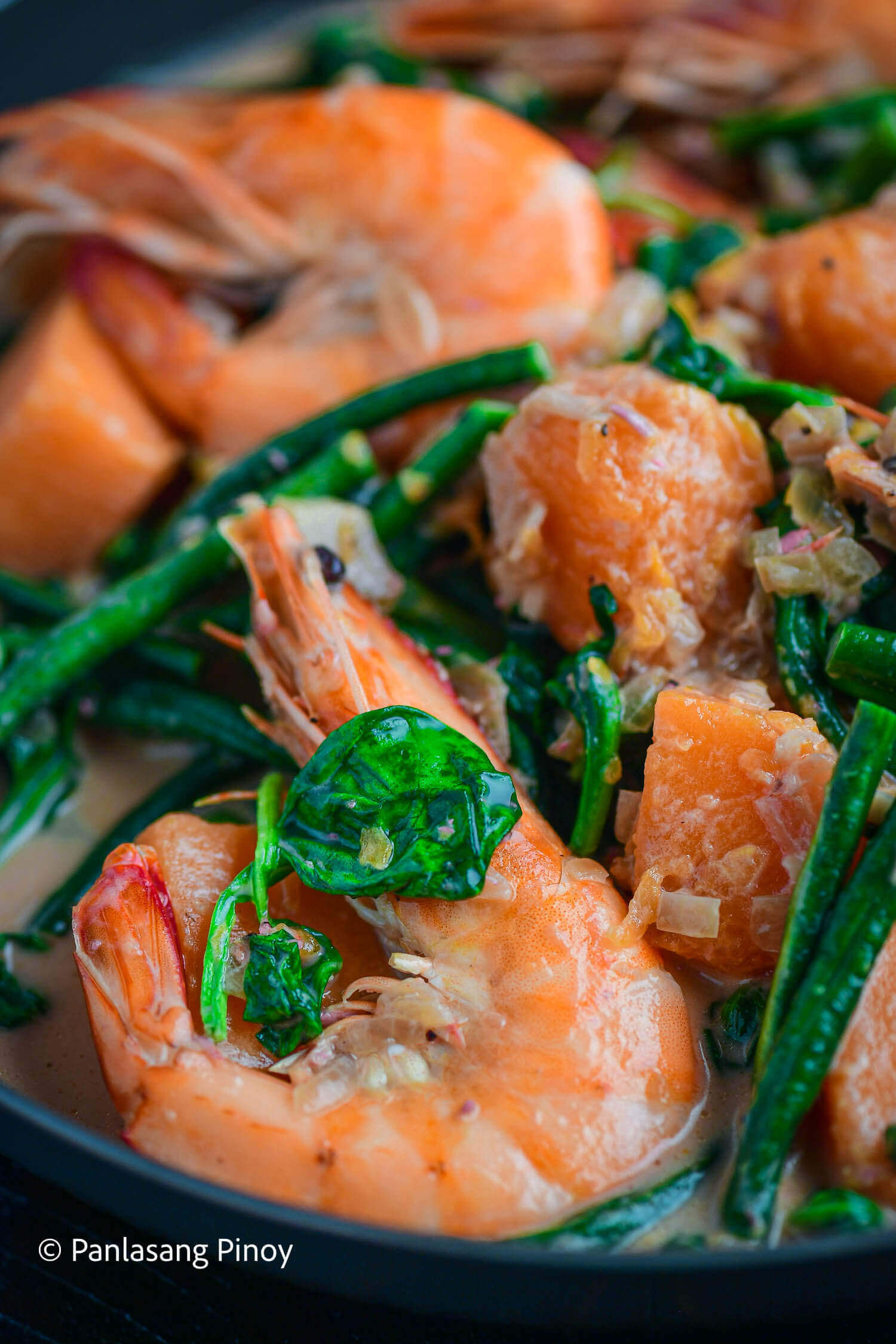
Share and enjoy this ginataang hipon, sitaw, at kalabasa! Did you love making this tasty, hearty treat? Let us know what you think!
Did you make this? If you snap a photo, please be sure tag us on Instagram at @panlasangpinoy or hashtag #panlasangpinoy so we can see your creations!

Ginataang Hipon, Sitaw, at Kalabasa
Ingredients
- 1 lb shrimp cleaned
- 10 strings beans sitaw, cut into 2 1/2 inch length
- 2 cups kalabasa squash, cubed
- 2 cups coconut milk
- 1 medium yellow onion sliced
- 2 tablespoons bagoong alamang shrimp paste
- 1 cup malunggay leaves
- 3 cloves garlic crushed
- Salt and pepper to taste
- 3 tablespoons cooking oil
- Salt and pepper to taste
Instructions
- Heat oil in a cooking pot.
- Saute the garlic and onion until the onion becomes soft.
- Put-in the shrimp. Cook for 1 to 2 minutes. Remove from the pot and set aside.
- Meanwhile, put-in the bagoong alamang and pour-in the coconut milk. Stir and let boil.
- Add the kalabasa. Cook for 8 to 12 minutes or until tender.
- Put the shrimp back in the pot. Stir and cook for a minute.
- Add the string beans (sitaw) and malunggay leaves. Cook for 2 to 3 minutes.
- Add salt and pepper to taste.
- Transfer to a serving plate. Serve.
- Share and enjoy!
Video


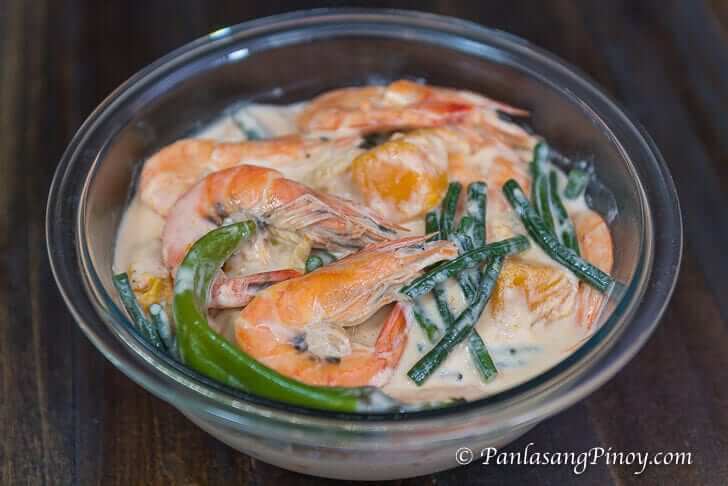
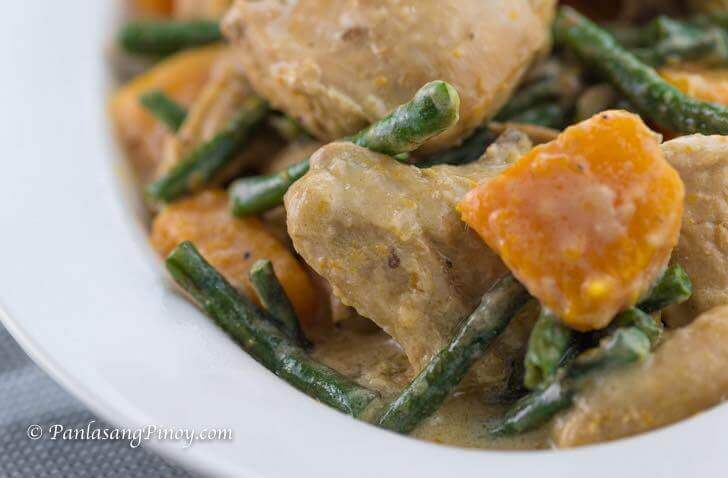
JayBeethoven says
Thanks for the recipe. A newbie like me needs this.
My partner asked for more cubes of squash so I added more. But it didn’t affect the taste.
I added one tablespoon of bagoong as well cause I want it a little more salty.
My partner loved it. Thanks again.
I become an instant chef. Lol
Jay from Illinois.
DENNYBIE says
i try this at home, perfect, and my aunt she love it, since then, i am her chef heeheh, without her knowing i am taking the recipes from your site, thank you so much, you make me feel i am a little chef in this way, i feel awesome, i love cooking now..
anndobo baslee says
Its nice to see your face.I love your website!
Vanjo Merano says
Thanks!
Maui Boy says
Go to for all my pinoy recipes like how you set up your site along with the walkthrough on youtube. Question where are you living just wondering.
lhet says
im having vacation here in slo(part of europe)…wanna cook ginattaang hipon at klabasa but i cant find shrimp paste and sitaw here..what can i use as a subtitute for that..pls help:)
and one more thing,,i cant find also fish sauce here,,do you think thin sauce is similar to fish sauce..pls pls help
thank u
Rita says
Ms Lhet,please try to find Filifino Supermarket there and you will find all filipino items you need.Good luck!
Erika says
I make it with oyster sauce, it’s also really nice 🙂
amy says
Cooking this right now, following your recipe but i do not have coconut milk. It was cream so sad. Well give it a try also i just add bit water, hopefully it will work.
Bryan Veloso says
So yummy! My ate cooked this for me. Thanks for sharing. 🙂
Rommel says
My wife is cooking this now following your recipe. We can’t wait to taste it. Thanks!
Michelle says
Thank you for sharing your recipe! Although I love this dish, the coconut milk is very rich. Do you have any suggestions for an alternative liquid base? Thanks.
aj says
i will try this later but i will be using pork belly instead of shrimp. thanks vanjo!
Rod says
As an OFW husband alone, thanks for posting so easy to prepare pinoy delicacies like this w/c my wife alys cook der n the Phils…
reycatalunia says
Continue what your doing Mr. Chef, I think you are doing an excellent job allowing to visit your site and showing the “how to” especially when it comes to our native dishes…
Vanjo Merano says
Thanks for taking time to comment. Your opinion is greatly appreciated. However, I suggest that you give this recipe a try and then please get back to me and provide your feedback — Who knows,maybe you will be judging this recipe differently.
Anna says
Medium to low heat cooking lang po ba ito the whole entire time? Sorry po, newbie cook here…
Vanjo Merano says
Hi Anna, no worries; it’s good to clarify. You will need to use high heat when you saute the onion and garlic and until the shrimp are cooked. Turn the heat to medium when adding the bagoong and coconut milk. Once the coconut milk starts to boil, put the heat to low-medium all throughout.
Vera says
I’ve lived abroad for several years now and will once in a while have a craving for Filipino foods. I saw this recipe and followed everything. For someone who seldom cooks, your recipe was quite easy to follow. Instead of sitar I used haricot vert. You’re right about which to sauté first , garlic or onions. To solve that I placed them both in the pan at the same time. I couldn’t find alamang around here, so I used patis. The shrimp s were really seasoned following your step on coking it a bit with the spices. Great idea! All in all it was a great dish. I loved it! Thanks for making your recipes simple yet delicious!
Vanjo Merano says
Hi Vera. Thanks for your feedback. Glad that everything worked out fine.
potch sioson says
Thank you so much for this simple yet so healthy food. I cooked this last night and my husband really like it. I cooked it lightly dry and he told me to cook this again later.
Thank you for sharing.. gob bless.
Janice Intal says
Love this dish I tried it it so good thanks kuya keep it up
Mimie says
Just made the ginataang sitaw and kalabasa with shrimp and it was absolutely amazing!!! Thank u very much for all your recipes! I usually go to panlasang pinoy if i need any new recipes. I don’t search anywhere else because i know your recipes are good. Hope you continue for a looong time. Thanks again!
james says
Gud taste of different kinds of menus I love it.
jhantery says
yep ,,if always yan ang gulay d aq magsaswang kumain
Ayit says
thank you so much ………..ALAS! my very first time i see your handsome face finally Mr Merano…FYI….I am one of your most avid fan … more power to you and again thank you so very much for this show 🙂
Letlet Larcia says
Great recipe! I did not use whole shrimp though. I sliced the raw meat of the shrimp. I also added a little ground pork. I used a gata mix because it was the one readily available. It was yummy! my kids who seldom eat veggies loved it!